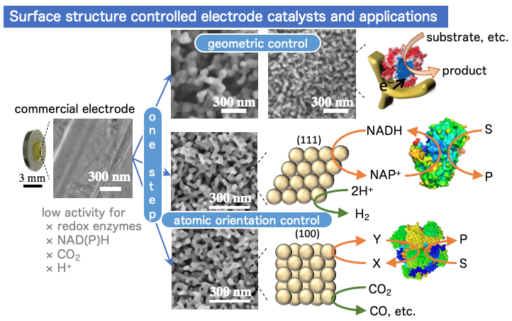Redox enzymes such as cytochrome P450 receive/serve electrons to catalyze their specific reactions for a variety of substrates, as being promising tools in production of pharmaceuticals and chemicals. We are developing the method for controlling electron transfer from an electrode to enzymes and vice versa in order to efficiently produce highly valuable substances using the enzyme catalysis. So far, we have proven that the nanostructured electrode surface, especially the size controlled nanopore structure prepared by anodization technique) highly promotes the electron transfer between the enzyme and electrode surface. We also have developed the method to control the surface atomic structure (crystallographic orientation) on the porous gold electrodes by quite simple technique, and found that the different contribution of the orientation considerably differ the redox activity of proton, monosaccharides, keto-acids, etc., indicating the usefulness of the present method to develop the metal catalysts for various molecular conversions.


